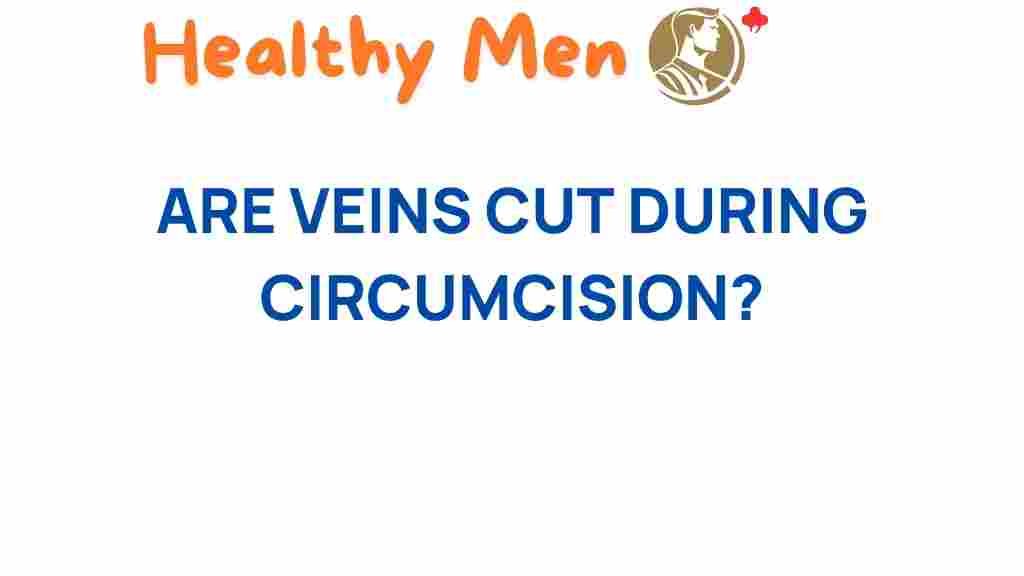The Intriguing Truth About Veins and Circumcision Procedures
Circumcision is a medical procedure that has been practiced for centuries for various cultural, religious, and health reasons. Understanding the anatomy involved, including the role of veins, is essential for parents making decisions about this procedure for their infants. This article delves into the intricate relationship between circumcision and veins, the health implications surrounding the surgery, and the surgical risks involved. We will also touch on important aspects of infant care post-procedure and the parental decisions that come into play.
Understanding Circumcision and Its Purpose
Circumcision involves the surgical removal of the foreskin, which is the fold of skin covering the head of the penis. This procedure is often performed on infants but can also be done on older children and adults. The reasons for circumcision can be grouped into several categories:
- Religious Reasons: Many religious communities, particularly in Judaism and Islam, view circumcision as a rite of passage.
- Cultural Reasons: In some cultures, circumcision is a tradition that signifies manhood or community belonging.
- Health Reasons: Some studies suggest that circumcision may reduce the risk of urinary tract infections, sexually transmitted infections, and penile cancer.
Anatomy of the Penis and Veins
To fully grasp the implications of circumcision, it’s important to understand the anatomy of the penis, especially the role of veins. The penis contains several key structures:
- Corpora Cavernosa: Two columns of erectile tissue that run along the length of the penis.
- Corpus Spongiosum: A column of erectile tissue that surrounds the urethra and ends in the glans (the tip of the penis).
- Foreskin: The retractable fold of skin that covers the glans; its removal is what circumcision entails.
- Veins: Responsible for draining blood from the penis, these veins are critical in maintaining proper blood flow and overall health of the organ.
During circumcision, care must be taken to avoid damaging the veins, which can lead to complications.
Health Implications of Circumcision
The decision to circumcise can have several health implications. Here are some considerations:
- Reduced Risk of Infections: Studies have shown that circumcision may lower the risk of urinary tract infections in infants and some sexually transmitted infections in adults.
- Penile Hygiene: Without a foreskin, maintaining hygiene can be easier, which may decrease the risk of certain infections.
- Potential Complications: As with any medical procedure, circumcision carries risks such as bleeding, infection, and injury to the penis, particularly the veins.
The Surgical Procedure: What to Expect
Understanding the circumcision process can help parents feel more prepared. Here is a step-by-step overview of what typically happens during the procedure:
- Consultation: Parents meet with a healthcare provider to discuss the reasons for circumcision, the procedure, and potential risks.
- Preparation: The infant is placed on a sterile table, and the area is cleaned thoroughly to reduce the risk of infection.
- Anesthesia: A local anesthetic is commonly administered to minimize pain during the procedure.
- Procedure: The foreskin is carefully removed, and attention is paid to the veins to avoid excessive bleeding.
- Post-Procedure Care: After the surgery, the infant is monitored for any immediate complications.
Post-Circumcision Care
Proper care following circumcision is essential for a smooth recovery. Here are some tips for parents:
- Keep the Area Clean: Gently clean the area with warm water. Avoid using soap until the area has healed.
- Watch for Signs of Infection: Monitor for unusual redness, swelling, or discharge. Contact a doctor if these symptoms occur.
- Pain Management: Consult with a healthcare provider about appropriate pain relief methods for the infant.
- Diaper Care: Change diapers frequently to keep the area clean and dry, reducing the risk of irritation.
Understanding Surgical Risks
While circumcision is generally safe, it is crucial for parents to be aware of the possible surgical risks:
- Bleeding: Some bleeding is normal, but excessive bleeding can occur if veins are damaged.
- Infection: As with any surgical procedure, there is a risk of infection at the incision site.
- Pain and Discomfort: Infants may experience pain post-surgery, which can usually be managed with medication.
- Scarring: Improper healing may lead to scarring or changes in the appearance of the penis.
Making Parental Decisions
Deciding whether to circumcise a child is a deeply personal decision for many families. Here are factors to consider:
- Personal Beliefs: Cultural, religious, and personal beliefs can significantly influence the decision.
- Consulting Healthcare Professionals: Engaging with pediatricians or urologists can provide valuable insights and help weigh the pros and cons.
- Health Considerations: Consider the child’s health and any potential medical conditions that may affect the decision.
Troubleshooting Common Concerns
Parents may have concerns or questions as they navigate the circumcision process. Here are some common issues and solutions:
- Concern About Pain: If the infant appears to be in pain, consult the healthcare provider for appropriate pain relief options.
- Worry About Infection: If there are signs of infection, such as fever or unusual discharge, seek medical attention immediately.
- Questions About Appearance: Parents may be concerned about how the penis will look post-circumcision. Consulting with a doctor can provide reassurance.
Conclusion
Circumcision is a significant medical procedure with various implications for health and parental decision-making. Understanding the anatomy involved, particularly the function of veins, and the health implications of circumcision can help parents make informed choices. Post-procedure care is crucial to ensure a smooth recovery, and being aware of the surgical risks can help families prepare adequately.
Ultimately, the decision surrounding circumcision is personal and should be made after careful consideration of all factors involved. For more information on infant care post-surgery, parents can visit this resource. Additionally, to understand more about the health benefits and risks of circumcision, you may find this external link helpful.
This article is in the category Conditions and created by healthymen Team
